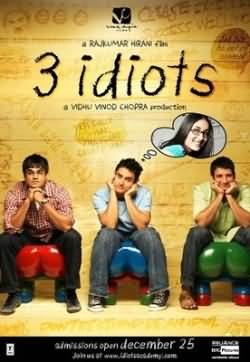BTS’s V released his new digital single ‘FRI(END)S’ worldwide simultaneously on March 15th at 1 PM. This song is a confession song expressing the desire to transition from friends to lovers, with V’s enchanting vocals and emotions added on top of a sweet and melodious melody. As a result, it’s bringing spring-like excitement to ARMYs (BTS fan club) worldwide. Notably, BTS V’s ‘FRI(END)S’ debuted at number one on the New Zealand Hot 40 Singles Chart and entered the U.S. Billboard Hot 100 chart. Additionally, it reached the 7th position on Spotify’s Daily Top Songs Global chart, one of the world’s largest music streaming platforms. Let’s enjoy it together!
Blackpink Jisoo’s “Flower”
Jisoo of BLACKPINK’s announcement of her new single ‘Flower’ has created a significant buzz among fans and the music industry alike. The teaser video, a personal project of hers, offered a glimpse into the musical direction she’s heading. With its sophisticated visuals and delicate sensibility, the ‘Flower’ teaser was filled with Jisoo’s beautiful voice adding depth to the music, showcasing her unique charm alongside stunning visuals. The video was deemed a harmonious masterpiece, blending artistic aesthetics and musical prowess.
International fans showed a fervent response to Jisoo’s new single ‘Flower,’ praising her unique vocal style and stunning appearance. Moreover, her innovative musical attempts were met with acclaim. BLACKPINK fans seem to increasingly recognize each member’s individuality and potential with every solo endeavor.
On one hand, expectations soared for this solo venture as an opportunity for her to showcase a new facet of her musician self. Building upon her outstanding stage performances and musical abilities demonstrated as a BLACKPINK member, her solo activity left a lasting impact on many.
Epilogue: The dance moves featured in Jisoo’s new single ‘Flower’ continue to captivate global audiences, with everyone attempting to emulate them.
PARASITE(기생충)-Movie
The movie “Parasite,” directed by Bong Joon-ho, deals with various themes such as social class, family, and human nature, leaving a deep impression on the audience. The rough plot is as follows:
“Parasite” revolves around a marginalized family in Seoul. The Kim family, led by Ki-taek (played by Song Kang-ho), struggles to make ends meet in their impoverished life. Ki-taek’s son, Ki-woo (played by Choi Woo-sik), is unable to attend university and stays home as an unemployed young man, while his daughter, Ki-jung (played by Park So-dam), dreams of art school but remains unemployed. One day, through a stroke of luck, Ki-woo is offered a tutoring job for English at the wealthy Park family’s mansion, substituting for his friend who is going abroad. This opportunity becomes a turning point in the Kim family’s fate.
Ki-woo seizes the chance to secure jobs for other members of his family in the Park household. Ki-jung is hired as an art tutor for the Parks’ son. Gradually, other members of the Kim family infiltrate the Park household as well, disguising themselves as different workers such as a housekeeper and a chauffeur. This infiltration marks the beginning of a subtle rearrangement of social classes.
However, even after the Kims integrate themselves into the Park family’s lives, the story does not end there. Unexpected events unfold as hidden secrets from the Park family’s past come to light, intensifying the conflicts and confrontations between the Kims and the Parks. Ultimately, unforeseen clashes lead to a dramatic climax. The film exposes societal inequalities and conflicts while captivating the audience with its artistic direction and gripping storytelling.
“Parasite” captivates audiences with its exploration of social issues while delivering entertaining and shocking scenes. Bong Joon-ho’s skillful direction and the stellar performances of the cast have earned the film numerous awards and widespread acclaim. Moreover, the film leaves a lasting impact, prompting viewers to contemplate its themes of social class, family dynamics, and human nature.
My Thoughts:
One day, to celebrate Park’s son, Da-song’s birthday, the Park family decides to go on a camping trip together. With the Parks out of the house, the Kims take advantage of the situation and indulge in the luxuries of the Park mansion as if it were their own. Ki-woo lies down in the front garden, enjoying the leisurely read of Da-hye’s diary, while Ki-jung takes a bath in the tub, sipping on imported mineral water and watching TV. Meanwhile, she indulges in playing with the three pet dogs in the garden. As night falls, they set up a lavish spread of drinks and enjoy the rain pouring down on the lawn. However, just as they start to relax, thunder roars, lightning strikes, and heavy rain suddenly pours down. Unexpectedly, a former housekeeper, who was previously dismissed, arrives, creating an unforeseen crisis. With the camping trip canceled due to the rain, and with Mrs. Park’s call announcing their imminent return, chaos ensues as the Kims scramble to clean up the mess and hide their true identities. Ki-jung swiftly hides under the living room table, while Ki-woo hides under Da-hye’s bed. Throughout this scene, the tension is palpable, and the realism of the situation grips the viewer’s attention. It’s a moment where the peaceful relaxation turns into a frantic struggle for survival, perfectly showcasing the film’s exploration of social class and human nature. Witnessing the Kims’ relaxed demeanor as they behave as if the mansion were their own, only to see their world turned upside down in an instant, makes one realize the true meaning behind the film’s title, “Parasite.” Bong Joon-ho’s masterful direction vividly portrays the class disparity and the lengths to which people will go to survive in a society riddled with inequality. This scene, among many others in the film, leaves an indelible impression, making “Parasite” a highly recommended cinematic masterpiece. I hope that everyone can watch it and experience the multitude of emotions it evokes.
“Korea’s Bibimbap: An Asian Treasure Packed with Irresistible Flavor and Healthiness!”
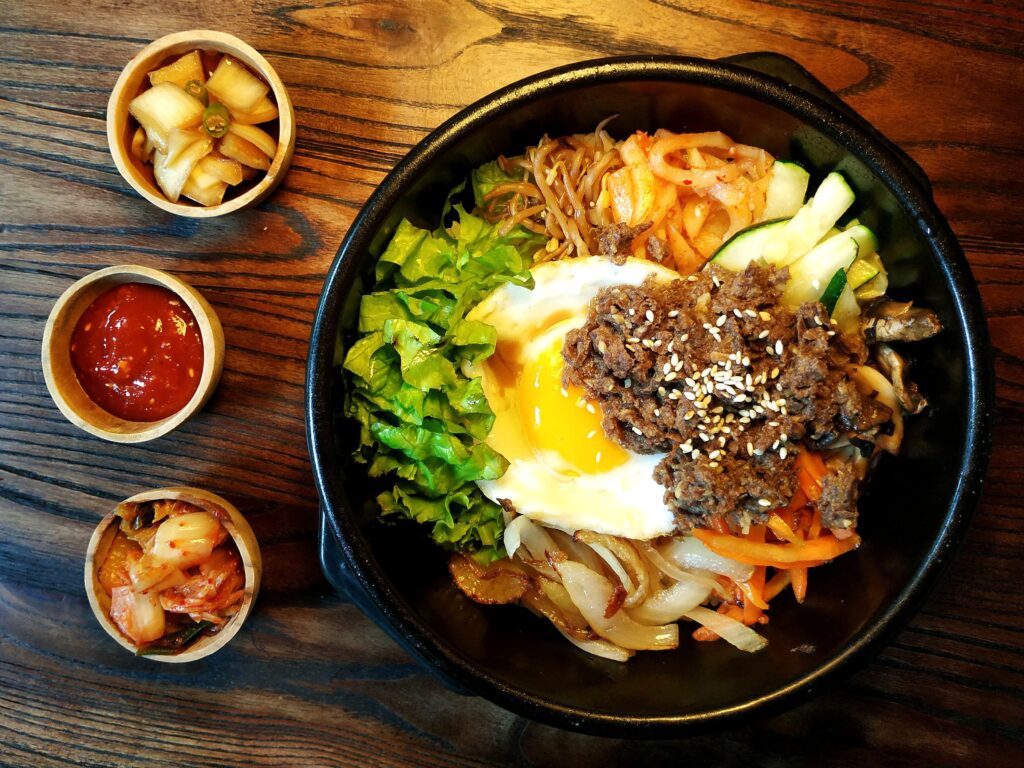
Let’s explore bibimbap, one of Korea’s most beloved traditional dishes, which is enjoyed by Koreans and foreigners alike without exception. Bibimbap is a healthy and delicious dish made by mixing various ingredients with gochujang (red chili paste), representing an iconic symbol of Korean culinary culture. In this article, we will delve into the ingredients, types, and eating methods of bibimbap in detail.
1. Ingredients of Bibimbap:
Bibimbap is made with a variety of ingredients, primarily including rice, meat, vegetables, egg, and seasoning. While white rice is commonly used, other types such as brown rice or glutinous rice may also be used. Meat options range from beef, pork, to chicken, while vegetables like carrots, cucumbers, spinach, and bean sprouts are commonly added. Eggs are typically served partially cooked, and the seasoning consists of gochujang and gochugaru (red chili pepper flakes).
2. Types of Bibimbap:
There are various types of bibimbap available. Representative examples include “yukhoe bibimbap” (beef tartare bibimbap), “Dolsot Bibimbap” (A dish of rice cooked in a hot stone pot, allowing it to stay warm for a long time while enjoying the meal), and “traditional bibimbap”. Each type offers its own unique taste and characteristics. Yukhoe bibimbap is known for its refreshing and tender flavor with fresh beef tartare and vegetables, while hwe dubbap offers a fresh taste with raw fish and vegetables. Traditional bibimbap, on the other hand, combines various ingredients and gochujang to create a rich and deep flavor profile.
3. Eating Bibimbap:
When eating bibimbap, it’s essential to mix the ingredients thoroughly before consuming. Then, enjoy each bite, savoring the balanced flavors and aromas. Adjusting the taste with additional gochujang or other condiments is common practice. Some restaurants may offer alternatives like soy sauce or salt and pepper for seasoning, providing diverse flavor experiences.
Bibimbap is not only a delicious dish but also a nutritious one, offering a blend of flavors and health benefits. Its unique taste and variety make it appealing even to Indians experiencing Korean cuisine for the first time. For Indians eager to explore Korea’s diverse culinary culture, bibimbap is an excellent choice.
BTS V’s new digital single ‘FRI(END)S’

BTS V’s new digital single ‘FRI(END)S’ is scheduled to be released on the 15th at 1 PM. This single is a ‘love song’ in the Pop Soul R&B genre, and all the lyrics are written in English. The atmosphere of the song conveys a lovely feeling against a clear pink background. This new song is being released approximately 6 months after V’s first solo album ‘Layover’. There is a lot of interest focused on V’s charm, as he has been recognized for his outstanding abilities as a solo artist through ‘Layover’.
Photos and teasers that give a glimpse of the atmosphere of V’s new single have already been revealed. In the first concept photo, a lonely and cold atmosphere is emphasized. V wears a headset, looks down or stares at the camera with empty eyes, expressing loneliness. In the second concept photo, the focus is on V’s soft and romantic side. The background blends with nature, and vintage styling stands out. With warm eyes and an excited expression, V captivates fans.
V’s new single is scheduled to be released on various music platforms on the 15th at 1 PM. By clicking the link, you can enjoy the 1st concept photos, 2nd concept photos, 1st teaser video, and 2nd teaser video. We ask for your continued interest!
https://ibighit.com/bts/kor/discography/v/detail/friends/
photo credits:
https://upload.wikimedia.org/wikipedia/commons/8/81/V_for_Dispatch_%22Boy_With_Luv%22_MV_behind_the_scene_shooting%2C_15_March_2019_01.jpg
copyright holder:디스패치의 민경빈
“Hidden Gems of Seoul That Seoul Travelers Love! Don’t Miss Out or You’ll Regret It”
Here are three recommended places for Indians to visit in Seoul:
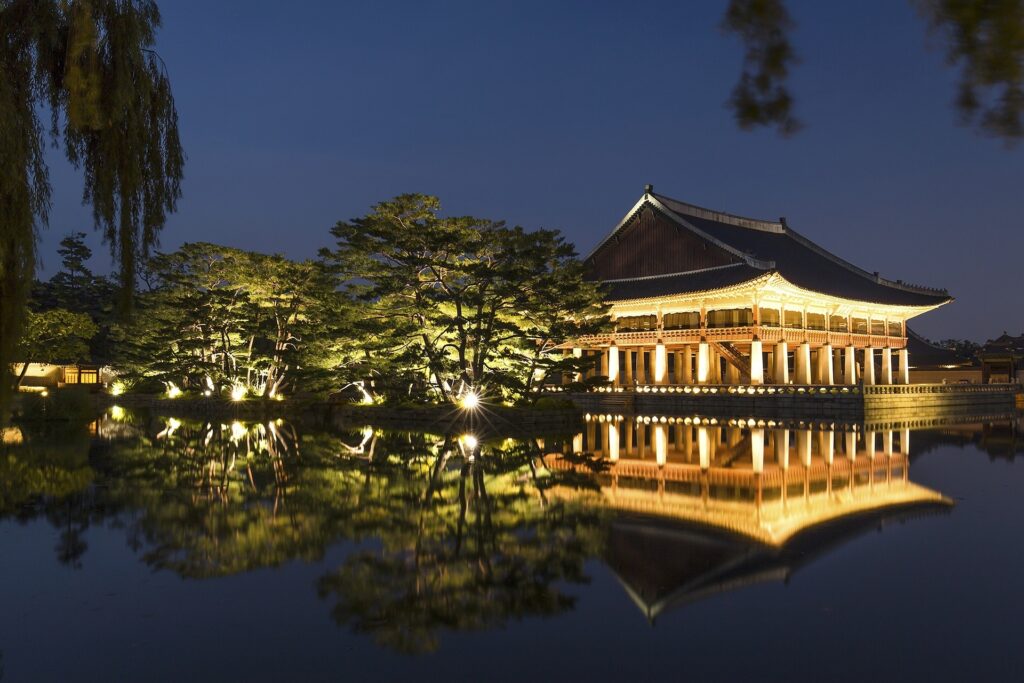
- Gyeongbokgung Palace: Gyeongbokgung Palace is a representative palace of South Korea, featuring beautiful traditional Korean-style buildings and a stunning garden. It is a great place for you to experience Korean history and culture.
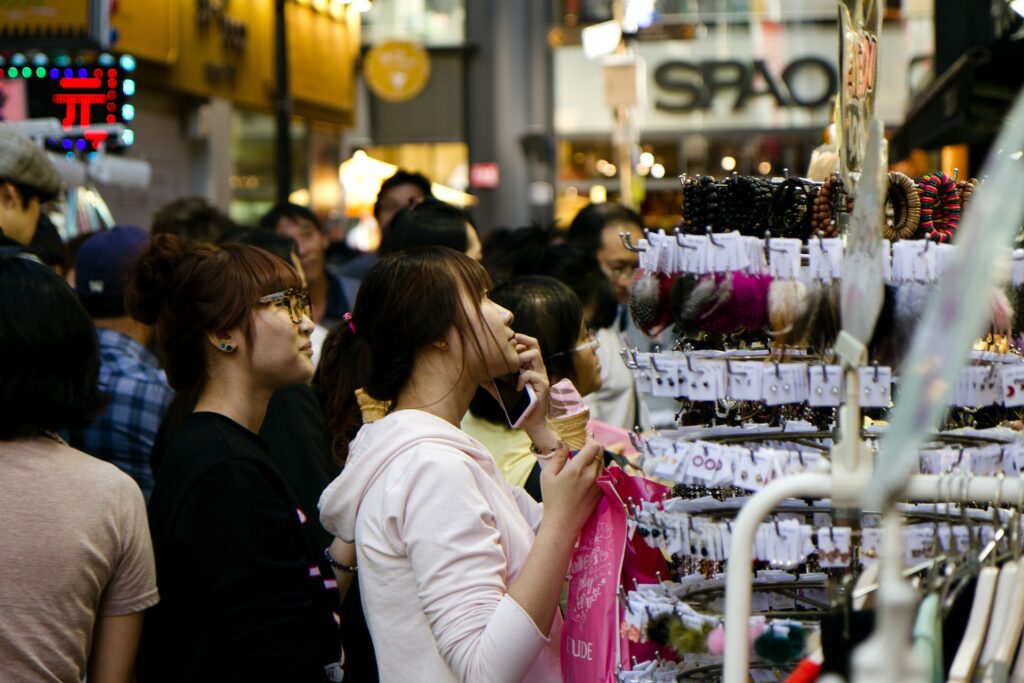
2. Myeongdong: Myeongdong is a bustling shopping district in Seoul, known for its vibrant shopping and food culture. You can purchase famous Korean brand products and enjoy Korean cuisine at various shops.

3. Namsan Tower: Namsan Tower is a landmark of Seoul, where you can enjoy a beautiful view of the city from the observatory. It is also a great spot for taking stunning photos.
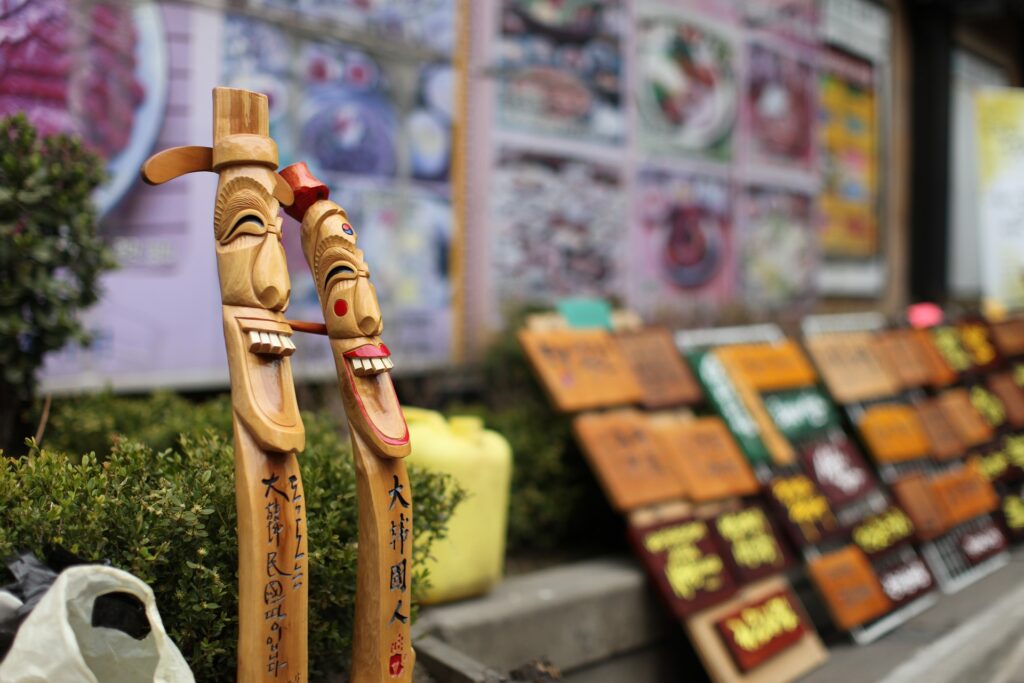
4. Insadong: Insadong is a place filled with traditional Korean-style buildings, art, and craft items. It is a popular destination for foreigners to experience traditional Korean culture and explore traditional crafts. You can enjoy browsing and purchasing Korean traditional craft items in Insadong.
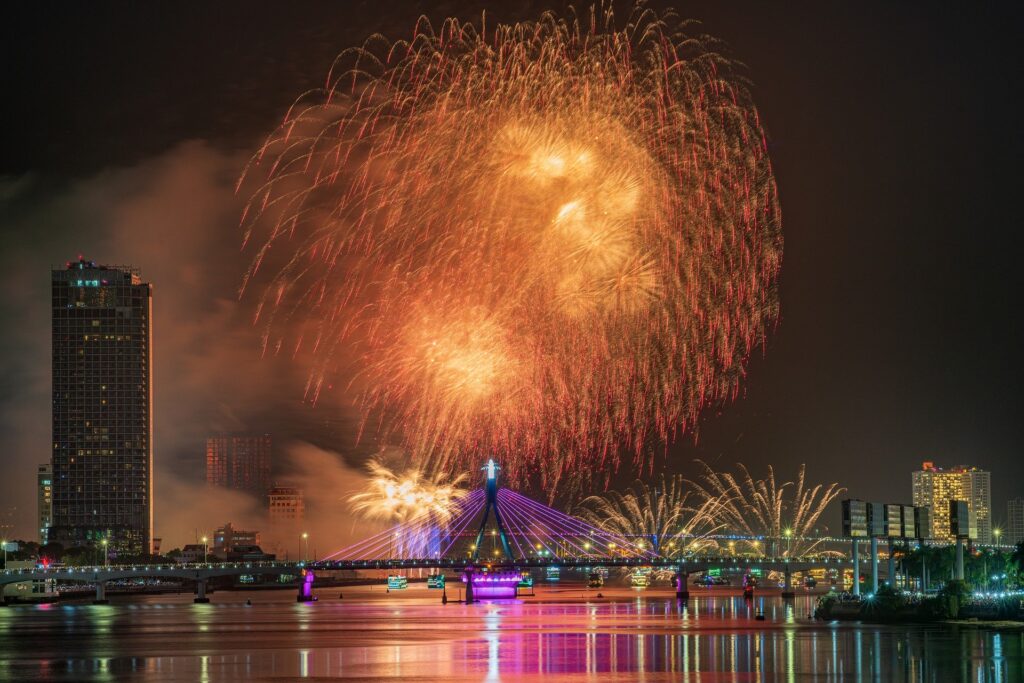
5. Han River: The Han River flows through Seoul and offers a great place for relaxation and leisure. There are walking paths and parks along the river where you can enjoy a picnic or bike ride while admiring the scenic views of Seoul.
In addition to these, Seoul has various other tourist attractions and cultural experience sites. I will provide a link to a website where you can explore other tourist destinations that suit your preferences. Please visit the link below:
“Embrace the Harmony of Korea-India, Experience the Beauty of Colors! Join the Holi Face Painting Challenge!”

The Indo-Korean Cultural Center is organizing a Holi Face Painting Challenge! In this challenge, we aim to share the “Fascinating Face Art” by blending elements of both Korea and India to showcase the harmony of Indo-Korean culture.
- Theme: Please express the fusion of India and Korea through colors.
- Format: Please submit high-quality images.
- Official hashtag: Please use #koreaindiaunitedincolours.
To participate, please send an email to media@koreanculture.in.
Below are the participation requirements and prize details:
- Participation requirements:
- Content that displays hatred, prejudice, or favoritism will be disqualified.
- If the entries face copyright issues on social networking service platforms, KCCI will not be held responsible.
- KCCI reserves the right to edit and use the submitted works for promotional purposes.
Selection process:
- Round 1: From March 12th to 17th, 2024, please post high-quality photos on your SNS channels.
- Round 2: From March 18th to 22nd, 2024, the works with the highest views and likes will be posted on the official SNS channel of the Korean Chamber of Commerce and Industry.
The prize distribution is as follows:
- 1st place: Rs 10,000 worth of Amazon vouchers
- 2nd place: Rs 5,000 worth of Amazon vouchers
- 3rd place: Rs 3,000 worth of Amazon vouchers
We look forward to your participation!
more details, click here
“Chosen by Koreans: ‘3 Idiots’ from India – A Collaboration of Humor and Emotion”
After watching ‘3 Idiots,’ I experienced a range of emotions and gained a deeper understanding of Indian culture and values. The camaraderie among Rancho and his friends made me realize the significance of friendship in my own life. Through the dreams and aspirations of each character, I found inspiration in my own journey to discover my dreams.
The beautiful landscapes and diverse cultures depicted in India within the movie sparked a desire in me to personally experience the country. The music and dance in the film hinted at new experiences for me, serving as a representation of India’s diversity and beauty.
Moreover, the film’s exploration of the education system and societal pressures resonated with aspects of my own culture. Engaging in discussions about shared values and issues across different cultures, I discovered similarities between India and my own country.
While every scene in ‘3 Idiots’ left a lasting impression, the “All Izz Well” scene, filled with Rancho’s rap dance, opened my heart wide. The humor and dynamism transcended different cultures and values, creating a connection we could all resonate with. I found myself humming “All Izz Well” throughout the day. ^^
‘3 Idiots’ is not just a comedy; it carries profound lessons that I can apply to my own life. Through this film, I learned to respect everyone’s individual dreams and values, realizing that we can all embark on a journey to find true happiness.
Hangeul(Korean Alphabet)
“Korean: Discovering Mysterious Fonts in India”
1. The Origin of Hangul
Hangeul is a script used in both South Korea and North Korea for recording syllables. Created by King Sejong in the 15th century, Hangeul consists of 14 consonants and 10 vowels. Known for its balanced design in both horizontal and vertical aspects, it features a logical arrangement of pronunciation symbols. Hangeul is employed in writing modern Korean and is widely used among Korean speakers.
2. How to Read Hangeul
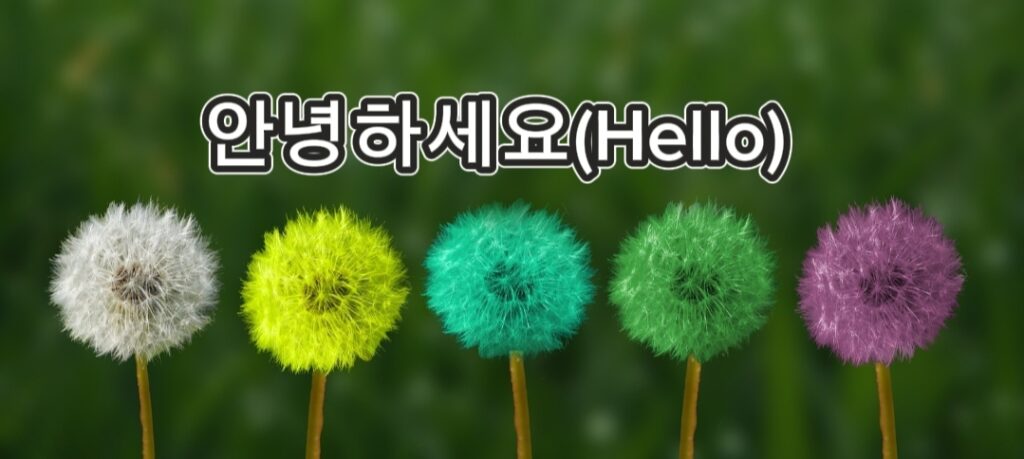
Reading Hangul is simple. Firstly, Hangul characters are arranged horizontally and composed at the syllable level. Each syllable consists of a combination of consonants and vowels.
- Understanding Consonants and Vowels: Hangul has 14 basic consonants and 10 basic vowels. Consonants can appear in the initial, medial, and final positions.
- Reading Order: Hangul is read from left to right and top to bottom. Each syllable is read in the order of initial, medial, and final consonants.
- Combining Consonants and Vowels: When reading a syllable, the combination of consonants and vowels determines the pronunciation. Initial and medial consonants combine to form one syllable, and if there is a final consonant, it is added.
- Example: Using “안녕하세요” as an example, “안” combines the initial consonant ‘ㅇ’ and medial vowel ‘ㅏ’ to form “아,” and “녕” combines the initial consonant ‘ㄴ,’ medial vowel ‘ㅕ,’ and final consonant ‘ㅇ’ to form “녕.”
In summary, when reading Hangul, combine consonants and vowels to form syllables, and read syllables from left to right.
3. The Pronunciation of Each Syllable in Hangul
The pronunciation of consonants in English is explained as follows:
- ㄱ (기역): Pronounced as ‘g’. Example: 가 (ga)
- ㄴ (니은): Pronounced as ‘n’. Example: 나 (na)
- ㄷ (디귿): Pronounced as ‘d’. Example: 다 (da)
- ㄹ (리을): The pronunciation is close to ‘l’ or ‘r’. Example: 라면 (ramyeon)
- ㅁ (미음): Pronounced as ‘m’. Example: 마음 (maeum)
- ㅂ (비읍): Pronounced as ‘b’. Example: 밥 (bap)
- ㅅ (시옷): Pronounced as ‘s’. Example: 소리 (sori)
- ㅇ (이응): No specific sound or pronounced as ‘ng’. Example: 안녕 (annyeong)
- ㅈ (지읒): Pronounced as ‘j’. Example: 저 (jeo)
- ㅊ (치읓): Pronounced as ‘ch’. Example: 차 (cha)
- ㅋ (키읔): Pronounced as ‘k’. Example: 친구 (chingu)
- ㅌ (티읕): Pronounced as ‘t’. Example: 투표 (tupyo)
- ㅍ (피읖): Pronounced as ‘p’. Example: 피자 (pizza)
- ㅎ (히읗): Pronounced as ‘h’. Example: 하늘 (haneul)
4. “The Reason Why Hangul Was Voted as the Most Beautiful Script in the World”
When considering the aesthetic sense of Hangul, what are the advantages of Hangul compared to other languages?
Hangul has several advantages when compared to other languages. Here are some of the key advantages:
- Aesthetic Beauty: Hangul has a beautiful appearance with a harmonious combination of curves and straight lines. The characters, created by combining consonants and vowels, boast a unique and elegant aesthetic sense.
- Easy Learnability: Hangul is composed of combinations of consonants and vowels, and each character corresponds to its pronunciation and shape. This structure makes it relatively easy to learn Hangul, requiring less time and effort.
- Logical Composition: Hangul is composed of phonetic units, maintaining consistency between the sound system and the shape of characters. This logical composition helps understand the structure of words and predict pronunciation.
- Expressiveness and Versatility: Hangul enables the expression of various phonemes and syllable combinations. This allows for the representation of diverse words and sentences, supporting rich vocabulary and expressive capabilities.
- Compatibility with Computers: Hangul is standardized using Unicode, ensuring compatibility with computers. This provides a significant advantage for the universal use and sharing of Hangul worldwide.
With these advantages, Hangul is recognized as a unique and aesthetically superior script among languages worldwide.
Three Shining Treasures of India Beloved by Koreans: Taj Mahal, Golden Temple, Goa.
Here are three of the most popular beautiful places in India among Koreans:
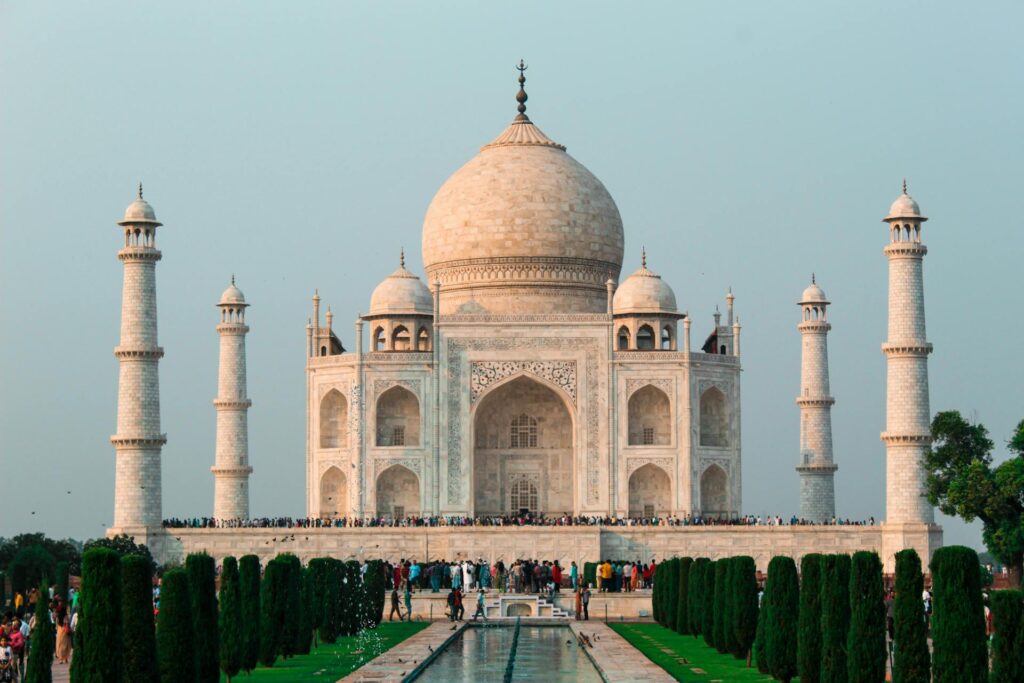
- Taj Mahal – Located in Agra, India, the Taj Mahal is a world-renowned landmark famous for its magnificent white marble architecture. Koreans love the Taj Mahal for its stunning architecture and historical significance. It is known as a symbol of love and its beauty captivates the interest of Koreans.
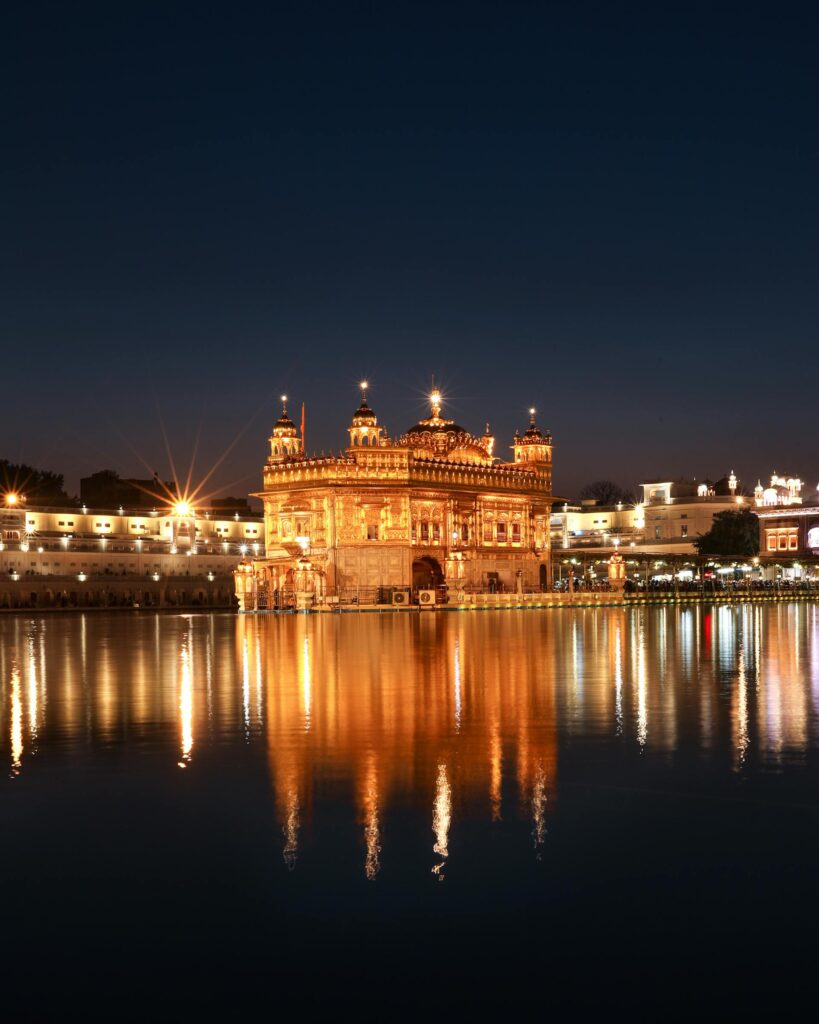
2. Golden Temple – The Golden Temple is an important Sikh shrine located in Amritsar, India, known for its golden architecture. Koreans appreciate the Golden Temple for its golden beauty and religious significance. It offers a peaceful atmosphere and a spiritual experience, making it appealing to Koreans.

3. Goa – Goa, India, is a beautiful beach city famous for its clear blue sea and vibrant sunsets. Koreans enjoy the beautiful beaches and the relaxing ambiance of Goa. The destination offers delicious seafood cuisine and a variety of activities, making it a popular choice among Koreans.
Koreans have various reasons for loving these places, including the stunning architecture, historical value, religious significance, relaxation and tranquility, and the availability of diverse activities.
“Korean Bus Smart Shelter”: The Reason Why CNN, BBC, AFP, and Reuters are Paying Attention to This Bus Shelter”
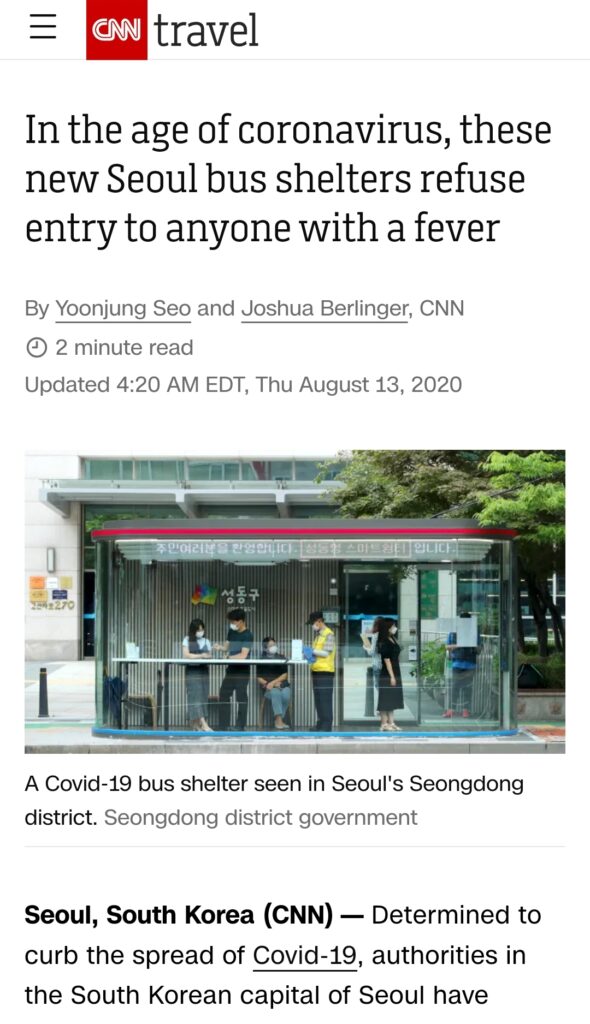
In South Korea, bus smart shelters require individuals to pass through a thermal camera at the entrance before the door opens. Additionally, these shelters are equipped with ultraviolet (UV) sterilizers to eliminate viruses, fine dust, and harmful gases, ensuring comprehensive air purification.
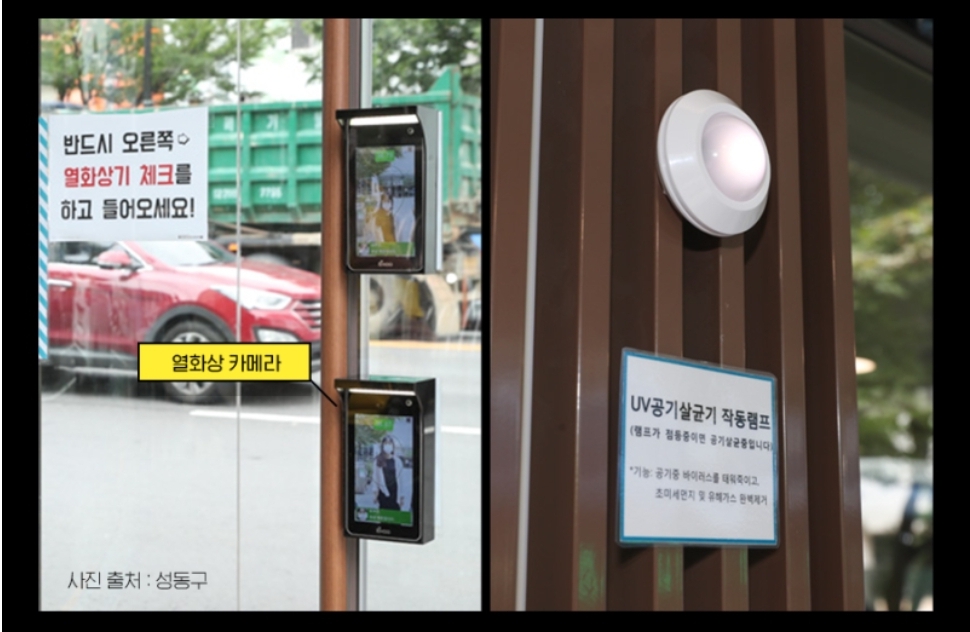
Inside the bus station, you can monitor real-time arrival schedules and approaching buses on digital screens. The station is equipped with a heating and cooling system to escape extreme temperatures, along with complimentary amenities like wireless phone charging and free public Wi-Fi.
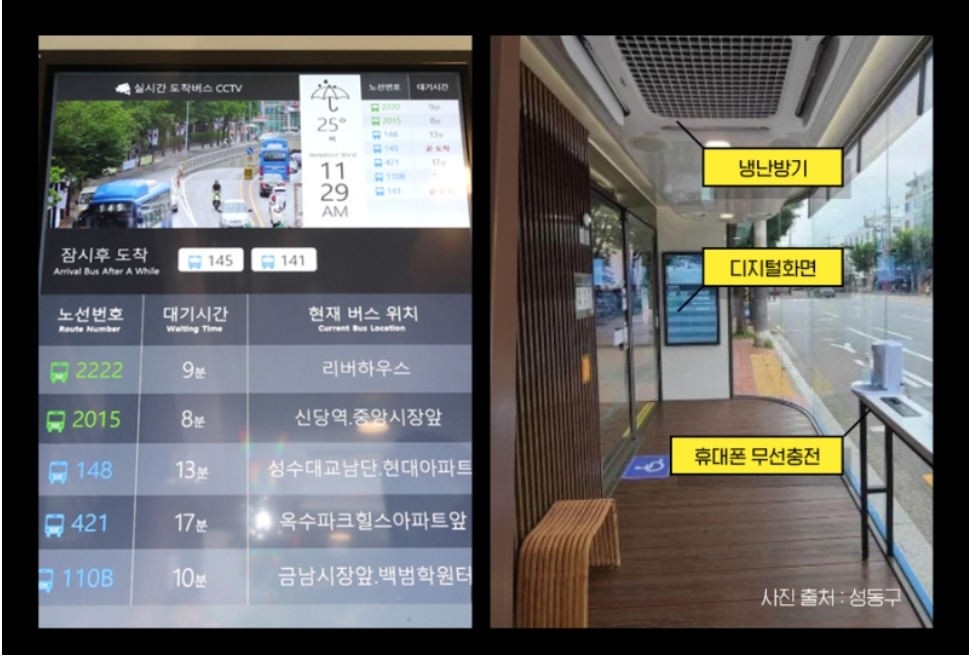
This is not the end. All systems within the shelter are remotely controlled by a control center using IoT. Intelligent CCTV both inside and outside the shelter autonomously detects unusual activities and shares real-time information with the police and fire departments. It is a safety system designed to prepare for unforeseen situations.
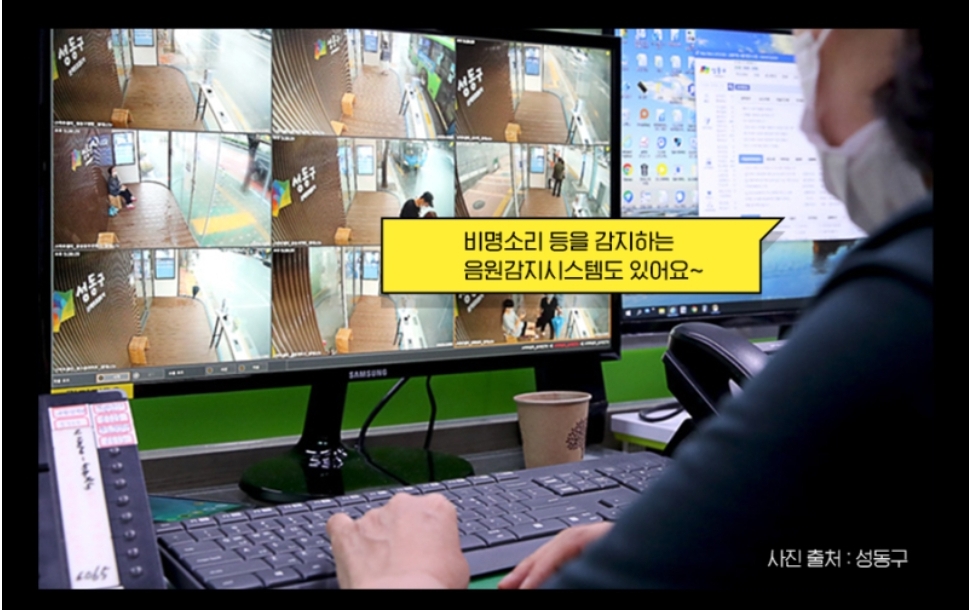
Furthermore, the bus shelter is equipped with an uninterrupted power supply system that generates its own electricity through solar panels on the roof. There’s no need to worry about power outages. While waiting for the bus, you can enjoy a moment of tranquility with shelter-specific music created by Hanyang University’s Music Therapy Department. This smart shelter, considering not only various conveniences but also safety, has gained international acclaim.
링크복사
https://youtu.be/YIFvXI95UNw?si=3JvKTnjCRJbmsGK0

